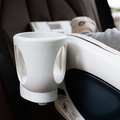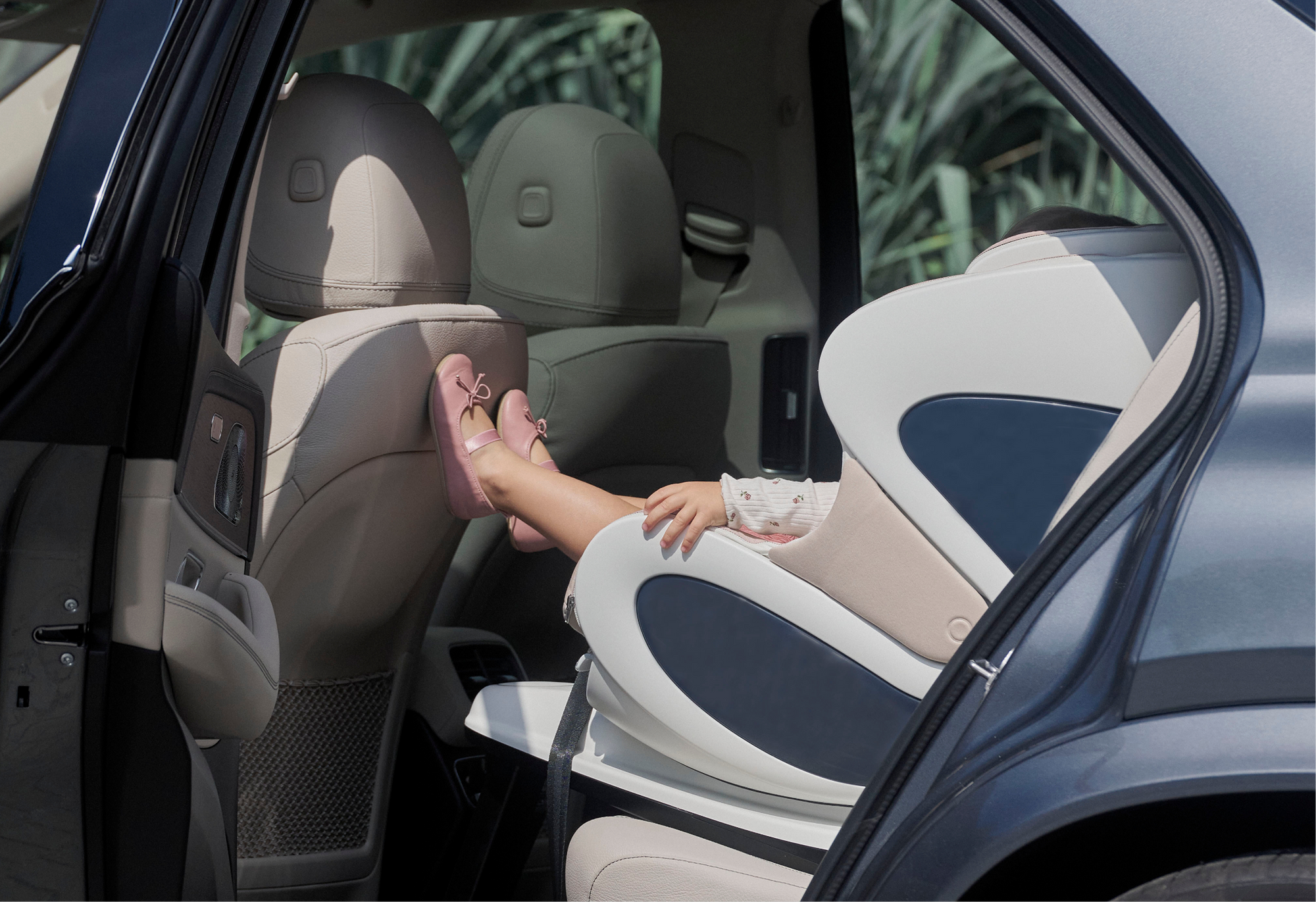The comprehensive head-to-head car seat comparison
While the babyark in many ways is different from any other convertible car seat before it, we thought it’s still important to create an in-depth comparison with other leading car seat brands; especially where we could go feature-to-feature.
Eli Gurock, owner of Magic Beans, and well known baby gear expert, took it upon himself to take a look under the hood of each car seat. We’re sure you will want to see what he discovered.

The babyark x Clek Foonf comparison
For parents with safety on their mind, the babyark vs Clek Foonf conversation is an interesting must-watch between two of the safest and upscale convertible car seats on the market.
Eli Gurock, renowned child gear expert, founder of Magic Beans, walks us through the differences between the two. He brings a unique perspective by comparing everything from cost to ease-of-installation to materials all the way up to enhanced safety features.
While both seats are 17” wide and 3 across, the babyark has a unique BioArk™ system designed to provide side-impact protection, diverting the energy away from the child and diffusing it throughout the seat. The Clek Foonf also has an effective side-impact protection system, but it is designed differently.
Both seats are quite easy to change from rear-facing to front-facing, with both seats providing industry-best extended switch position limits of up to 65Lbs, meaning your child has more time to stay in the safer rear-facing position before needing to switch to front-facing position.
The babyark comes with a loading leg and anti-rebound bar to break forward momentum in the event of impact. The Clek Foonf has an anti-rebound bar, but doesn’t have a loading leg.
While both seats are made of premium materials, the babyark has the added advantage of having a headrest made of D3O, the world’s most advanced shock-absorbing polymer.
Another key difference between the two is that the babyark features the innovative energy-absorbing SafeCoil ™ system which was originally pioneered in helicopters and armoured vehicles. The system is embedded in the base of the seat, and is designed to absorb impact, diverting the energy away from the child and towards the core of the seat.
While the Clek doesn’t have the SafeCoil™ system, it does have a super strong titanium plate that greatly absorbs the impact as well as the Re-Axis, a “crumple zone” in the base which provides highly efficient shock absorption.
The babyark also includes 14 different sensors which are connected to a mobile app, providing step-by-step guidance to proper installation, as well as a wide range of other real-time alerts and notifications.
The babyark x Britax Poplar
For parents looking to compare convertible car seats that are 17” wide, provide an extended rear facing limit and have flame retardant materials, the babyark vs Britax Poplar conversation is an interesting must-watch.
Eli Gurock, renowned child gear expert, and founder of Magic Beans, walks us through the differences between the two, comparing everything from cost to ease-of-installation to materials all the way up to enhanced safety features.
While both seats are extremely safe, the difference between the two is not only one of price. With the Britax Poplar coming in at around $300 and the babyark Smart at $990, the reason for this difference lies in the enhanced safety features you will find with the babyark.
The Britax Polar is both light and easy-to-install, but the similarities pretty much end there. The babyark features two energy management systems, the SafeCoil™ and BioArk™, which were originally pioneered by helicopters and armored vehicles. The SafeCoil™ is embedded in the base of the seat, and acts to divert the energy at the moment of impact to the seat and away from the child.
The BioArk™ system is designed to provide side-impact protection, diverting the energy away from the child and diffusing it throughout the seat.
Furthermore, the babyark features a loading leg and anti-rebound bar that slows down forward movement in the event of a crash. The seat also includes premium materials and a headrest made of D3O, the world’s most advanced shock-absorbing polymer.
The babyark also includes 14 different sensors which are connected to a mobile app, providing step-by-step guidance to proper installation, as well as a wide range of other real-time alerts and notifications.
While price is always a big issue, comparing these two convertible car seats raises interesting questions regarding how we view safety.
The babyark x Nuna Exec comparison
Eli Gurock, renowned child gear expert, founder of Magic Beans, walks us through the differences between two ultra-premium, top-of-the-line convertible car seat options, the babyark and the Nuna Exec.
Both of the seats offer extended rear-facing limits, with the babyark Premium having a slight advantage of 55Lbs compared to the Nuna Exec’s 50Lbs, but the Nuna Exec turns into a booster once the child exceeds that weight.
Both seats are very easy to install, the Nuna Exec is installed by seatbelt. The babyark can be installed with either seatbelt or Rigid LATCH, but is optimized for the latter.
Both seats have an anti-rebound, but only the babyark has a front loading leg that is easily released from the car seat base during the installation process, anchoring the seat and breaking forward movement.
Perhaps the greatest difference between the two models is that the babyark features the innovative energy-absorbing SafeCoil™ system which was originally pioneered in helicopters and armored vehicles, tested on the battlefield to absorb impact, and modified to divert the energy away from the child and towards the core of the seat.
The babyark comes with a magnetic quick lock chest clip that lets you easily place your child in the seat at the right height for the shoulder straps. The Nuna Exec uses a more traditional chest clip. One of the cooler features with the babyark is that it uses D3O in its headrest, the world’s most advanced shock-absorbing polymer.
In terms of comfort and luxury, both car seats use premium upholstery, with fire resistant fabrics. Both seats are stylish and modern looking, and in this regard, it’s really a question of taste.
While both seats take safety to the next level, it really comes down to the difference in extended safety features.





